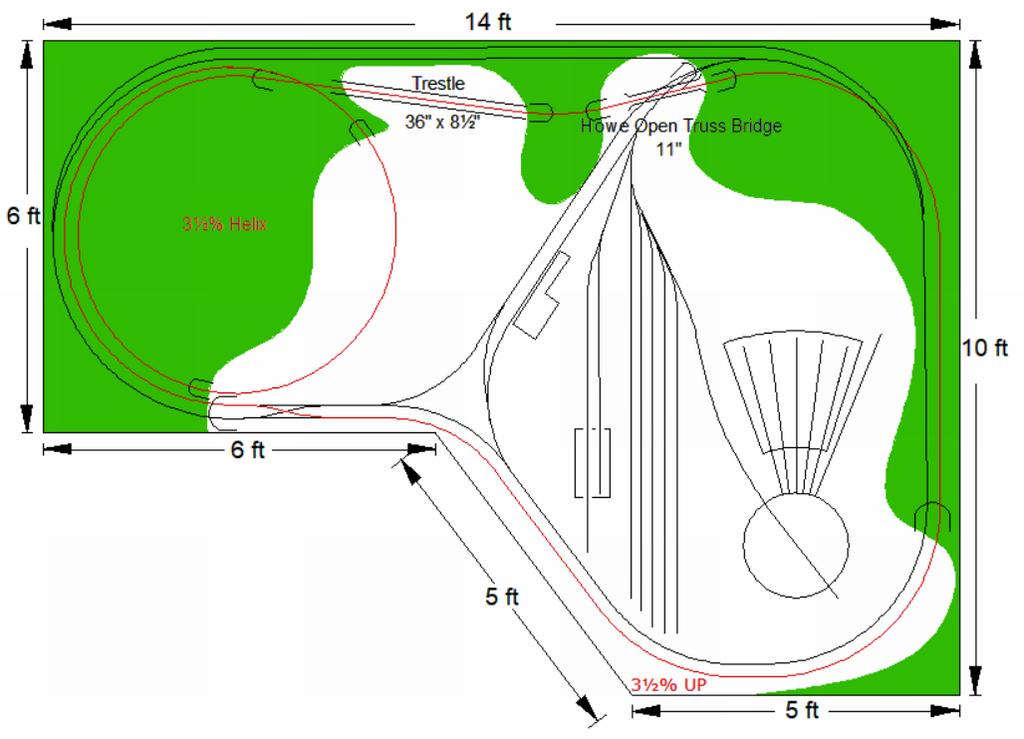For me, the most critical element is the trackwork. It has to be supported properly, it has to flow, it has to ‘work’, and it must be smooth and reliable.
So, first things first as I do them:
a. Carefully specked framing and bracing, including joists if risers are going to be used;
b. Tracks have to follow sensible and manageable roadbed, so I build that next. I take pains to make abutted elements of roadbed planar where they meet, no changes in grade. They only abut atop a riser. Risers can be raised or lowered to help with that grade problem;
c. Tracks placed, and in some places, if just for relief from hours of other types of work, I’ll also ballast;
d. Run a bus and feeders;
e. Start running trains, as many as possible, both directions, to find out problem areas;
f. Complete the scenery; and
g; Build the yard.
I have found it helpful to have both a scale drawing and a posted reminder sheet of important steps, even sequences, not to be forgotten, or when to do them. For example, the backdrop. It should almost always get done prior to scenicking, and for some layouts, before the benchwork is constructed. Another example, tunnel liners. Construct them before you find yourself scrunched up under the benchwork, reaching up through roadbed and risers…and wires…and trying to affix a blind/liner that keeps the tunnel dark.

